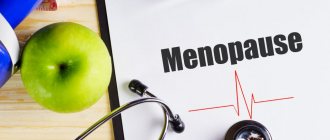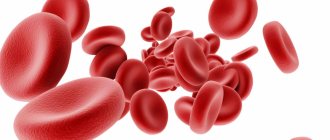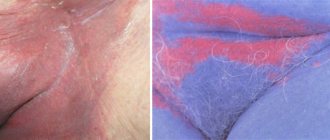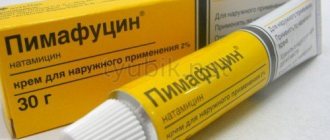General information
In the international classification of diseases, pathology is assigned code E23.
The disease mainly affects adolescents due to hormonal changes during puberty. Boys suffer from hypothalamic syndrome during puberty more often than girls. Pathology develops rapidly. The main danger of the disease is that puberty accelerates or, conversely, slows down. Since the hypothalamus plays the role of a higher regulatory center, if its functioning is disrupted, all systems suffer. If you do not seek medical help in time, the disease leads to serious complications (infertility, obesity, mental disorders, etc.). The teenager loses his ability to work, and problems appear in communicating with others. In order to carry out timely correction of the child’s condition, parents need to show him to the doctor at the first suspicious symptoms.
Symptoms of hypothalamic syndrome
The symptoms of hypothalamic syndrome of puberty in girls and boys are varied and often indistinguishable from signs of diseases of other organs and systems. The most common manifestations of pathology are as follows:
- feeling of weakness;
- weight gain or loss;
- hypertension;
- increased salivation and sweating;
- poor appetite and sleep;
- sudden mood swings;
- pulse fluctuations;
- heartache;
- allergic mood of the body.
Symptoms may vary depending on the type of pathology. The following forms are distinguished:
- vegetative-vascular (anxiety, panic attacks, tachycardia, rush of blood to the head);
- neuroendocrine (decreased libido, headaches, weight loss);
- psychosomatic (sleep disorder);
- psychopathological (sharp change in behavior);
- neuromuscular (weakness, fatigue);
- thermoregulatory (increased body temperature, chilliness).
These types of disease are the most common.
Other species are less common: they account for less than 4% of cases. Symptoms vary depending on the nature of the hypothalamic syndrome. The disease can progress or subside, making itself felt by periodic relapses and crises.
Cycle of female sexual development
Unlike representatives of the stronger sex, girls already at birth have a limited supply of eggs in their ovaries. These germ cells will ensure the reproductive function of a woman during her life.
Thus, the entire cycle of puberty is aimed at rational use of the ovulatory reserve. Like men, a woman's sexual development is divided into several stages.
Stage 1 Puberty and puberty
The period of puberty for girls begins somewhat earlier than for representatives of the stronger sex - already at the age of 8-9 years, the first changes begin to occur in the body. By the age of 13-14 years, the girl’s reproductive system is almost completely formed. However, age limits are individual.
Puberty of a girl is usually divided into two stages:
- Presexual stage of development (9-12 years)
- at this stage the girl enters a phase of rapid growth. Her body is actively changing, primary and secondary genital organs are developing, and the first vaginal discharge is observed. - Puberty stage (13
-
16 years )
- the onset of this period of sexual development is indicated by the first menstruation - menarche. At this stage, the girl’s active growth slows down and the ovulatory cycle begins to occur in her body every month.
Hormonal surge during maturation
At the endocrine level, puberty can be considered a veritable “hormonal explosion.” At approximately the age of 8-9 years, the hypothalamus begins to produce one of the main hormones of puberty - gonadotropin.
This hormonal substance has a stimulating effect on the pituitary gland, which in response synthesizes follicle-stimulating hormone (FSH). It is under the influence of FSH that the active work of the ovaries starts.
The ovaries are a paired endocrine organ that plays a critical role in the formation of a woman’s reproductive function. Activation of the ovaries is manifested by the production of female sex hormones - estrogens. It is the effect of these hormonal factors on the girl’s body that is accompanied by the physical changes that occur in the body during puberty.
An increase in the level of estrogen in the blood becomes a signal for the pituitary gland to produce another important female hormone - luteinizing hormone (LH). It is this endocrine substance that stimulates the process of the release of an egg from the follicle, which doctors call ovulation.
Puberty in girls
When the chain of hormonal reactions described above occurs in a girl’s body for the first time, we can talk about her entering puberty. The egg released from the ruptured follicle begins its journey through the fallopian tubes to the uterine cavity. The remains of the ruptured follicle turn into the corpus luteum. This name is associated with the accumulation of colored substances.
The corpus luteum is a temporary organ that provokes the production of estrogen in the ovaries. The corpus luteum also stimulates the synthesis of another important female hormone - progesterone. This hormonal factor is responsible for preparing the inner layer of the uterus (endometrium) for implantation of the zygote in the event of fertilization of the egg.
If pregnancy does not occur, progesterone and estrogen levels decrease and the process of menarche (first menstruation) begins. This process is manifested by the rejection of the inner layer of the uterus and its removal from the body in the form of bloody discharge from the vagina. Along with the remnants of the exfoliated endometrium, particles of the mucous membrane and the unfertilized egg itself are removed from the girl’s body.
Signs of puberty: when a girl turns into a girl
The hormonal changes that occur in a girl’s body during puberty affect her physical development. Signs of puberty appear as follows:
- Active growth
. Even before the onset of the first menstruation, you can notice the approach of puberty by a sharp growth spurt. Due to rapid growth, a girl’s body often takes on a somewhat “awkward” character, which is observed in most adolescents during puberty. - Development of the mammary glands
. Against the background of hormonal changes, the girl’s mammary gland begins to form. This process begins with an increase in the size of the nipples and halos. Then the gland itself increases in size, acquiring feminine shapes. By about 15-16 years, the process of formation of the mammary glands is almost complete. In this case, the final shape and size of a woman’s breasts are determined only after the birth of a child and the end of the lactation period. - Oily skin and acne.
As in boys, the action of hormones in a girl’s body activates the sebaceous and sweat glands. Doctors believe that this is necessary to naturally moisturize the skin, which stretches greatly with the rapid growth of the child. As a result, teenagers' skin is often prone to excess oiliness, which leads to acne on the face, neck and back. - Female pattern hair growth.
Hair growth in girls begins in the labia area and within 6-12 months spreads to the entire pubic area. Hair also begins to appear in the armpit area. - Shaping a feminine figure.
Unlike boys, who begin to actively grow muscle mass during this period, a girl’s body is formed according to the female type with a predominance of adipose tissue. The pelvic bones grow in width, causing the hips to increase in volume. In this case, fatty tissue is deposited in the area of the buttocks, thighs, mammary glands, pubis and shoulder area. - The appearance of menstruation.
The onset of the first menstruation becomes the most striking sign of puberty, when a girl acquires the ability to bear children.
Features of puberty in girls
Puberty is considered difficult not only from the point of view of physiological changes, but also from the psycho-emotional state of the girl.
Sharp hormonal fluctuations, body transformation and new unfamiliar processes in the body often cause changes in the behavior and mood of a teenager. Girls begin to show sexual interest in the opposite sex and are prone to complexes and lack of self-confidence. Sometimes these emotions manifest themselves as aggressive reactions.
The end of puberty is determined individually for each girl, but most often at the age of 15-16 years a woman has a mature reproductive system and is capable of conceiving, bearing and giving birth to a child. At the same time, physiological maturity has nothing to do with psychological maturity, which usually occurs somewhat later.
If signs of puberty appeared before 9 years of age or do not appear until 13-14 years of age, parents should contact a specialist who will conduct a comprehensive study of the girl’s hormonal background.
Stage 2 Puberty
The stage of puberty begins from the end of puberty and lasts until the onset of menopause. This period is optimal for the implementation of the function of childbearing. A mature woman has a regular menstrual cycle. Every month, her body alternates between the processes of egg maturation, ovulation and menstruation. This entire cycle is regulated by the same hormones that are involved in the process of puberty - FSH, estrogens, LH, prolactin.
If menstruation is absent or delayed, there is reason to suspect pregnancy or pathology. In this regard, a woman should closely monitor the menstrual cycle, which is considered the main indicator of women's health. This is necessary both for those planning a pregnancy and for women seeking effective contraception.
During puberty, a woman should regularly (at least once every six months) consult a gynecologist. During the appointment, the doctor assesses the condition of the genital organs, conducts microflora studies and excludes the presence of infections, the risk of which is greatest in women at the stage of puberty.
Stage 3 Climax
With age, a woman experiences a decline in sexual and reproductive functions. This period is called menopause or is designated by the general term menopause. The menopause consists of three main stages - perimenopause, menopause and postmenopause.
Menopause is the moment when a woman has her last menstrual period. The average age of menopause is 51 years.
Menopausal changes in a woman’s body begin with the extinction of the activity of the hypothalamus and pituitary gland. A decrease in the synthesis of hormones from these glands leads to the fading of the functions of the ovaries, which cease to produce a sufficient amount of estrogens. This leads to characteristic menopausal changes in a woman’s body.
First of all, the level of gestagen hormones, which are responsible for menstrual function, decreases. Ovulation occurs less frequently and the likelihood of conception is significantly reduced. At the same time, the nature of menstruation also changes - 60% of women note more scanty and infrequent menstruation, while 35%, on the contrary, experience heavy bleeding during menstruation.
Only 5% of women do not describe changes in the nature of the menstrual cycle before menopause.
Unpleasant symptoms of menopause
Other symptoms of menopause include the following:
- Hot flashes
- a woman regularly experiences sudden attacks of heat and redness of the skin of the face, neck, chest and arms. The tide usually lasts from 2 to 5 minutes, causing significant discomfort to the fair sex. - Heart problems
– against the background of hormonal changes, women notice palpitations, heart rhythm disturbances and frequent changes in blood pressure. - Decreased libido
– a woman’s libido usually decreases due to changes in hormonal levels. In addition, sexual intercourse may cause discomfort to the patient due to excessive dryness of the mucous membranes of the genital organs. - Changes in psycho-emotional state -
the period of menopause for a woman is accompanied by insomnia, anxiety, sudden mood swings, irritability and general weakness. - Physical discomfort -
many postmenopausal women report itching and burning in the genital area, pain and urination problems. Also, women often face the problem of gaining weight due to the predominance of male sex hormones over estrogens, the level of which decreases.
Menopause is a difficult test for a woman, both in terms of body reactions and in the field of mental changes. During this period, it is especially important to seek help from specialists who, based on studying hormonal levels, will help you survive menopause simply and comfortably.
If you find an error, please select a piece of text and press Ctrl+Enter
Causes of hypothalamic syndrome
Violation of the functions of the hypothalamus during puberty occurs against the background of hormonal changes in the body. The disease develops under the influence of external and internal negative factors:
- brain tumors involving the hypothalamus;
- traumatic brain injuries;
- intoxication with neurotoxic substances (alcohol, drugs, etc.);
- cardiovascular pathologies;
- infections;
- stress, psycho-emotional stress;
- chronic diseases affecting the functioning of the autonomic nervous system;
- genetic abnormalities.
Sometimes hypothalamic syndrome in young women can be triggered by pregnancy.
Male sexual development cycle
The content of the article
It is generally accepted that the cyclical nature of sexual development is more pronounced in women. In fact, a man’s life is also divided into cycles, each of which is regulated by a whole complex of hormonal factors.
Hormones that affect the sexual cycle and physical development of a boy are produced by the pituitary gland, hypothalamus, prostate gland, testicles and other endocrine glands of the body. The severity of sexual development and reproductive function of a man depend on the balance of hormones.
Stage 1 Puberty and puberty in boys
Puberty normally begins in a boy between the ages of 11 and 14 years. During this period, the hypothalamus begins to actively produce a specific hormone - gonadoliberin. At first, GnRH is synthesized exclusively during night sleep. Over time, this process increases, and the concentration of the hormone in the boy’s blood loses its dependence on the time of day and the sleep/wake cycle.
It is GnRH that acts as a substance that triggers the processes of puberty in a boy’s body. Under the influence of GnRH, the adrenal cortex and testes begin to synthesize a number of the most important male hormones of androgenic nature and testosterone. An increase in the concentration of these endocrine factors in a boy's blood causes a series of physical and physiological changes called puberty.
All hormonal changes in the body during puberty are aimed at developing the sexual and reproductive function of a man. During puberty, the most important process of formation of full-fledged germ cells (spermatozoa) capable of fertilization begins in the testicles. Doctors call this process spermatogenesis. From the moment the process of spermatogenesis begins, a teenager can become a father.
Signs of puberty: from boys to young men
You can talk about a boy’s puberty when the following signs and physical changes appear:
- Active growth.
The onset of puberty is accompanied by a phase of active, spasmodic growth. The first surge of male sex hormones leads to the boy’s rapid growth of 10-12 cm. Further growth may slow down for some time, after which the next jump occurs. The body of a boy at the age of 11-14 years begins to develop according to the male type - muscle mass increases, the width of the shoulder girdle increases. At the same time, the external genitalia undergo significant changes - the testicles and penis increase in size. - Pronounced hair growth.
First of all, hair growth is observed in the scrotum, groin and armpits. Somewhat later, hair begins to appear on the face, and then almost all over the body. - Pollutions.
Another sure sign of the onset of puberty is wet dreams. By this term, doctors understand involuntary uncontrolled ejaculation. This issue should definitely be discussed with the child even before wet dreams appear. - Changing the timbre of your voice.
At the age of 12-13 years, a boy begins the process of thickening of the thyroid cartilage - an Adam's apple appears. This is accompanied by lengthening of the vocal cords and growth of the throat muscles. These processes manifest themselves in the formation of a lower timbre of the voice. The process of developing timbre is also called “breaking” the voice. It can last about two years. - Skin problems.
An increase in the concentration of sex hormones also leads to activation of the sebaceous and sweat glands. This can affect the boy's skin, which becomes oilier and may be more prone to acne and breakouts.
Psycho-emotional changes under the influence of hormones
The hormonal “explosion” that accompanies puberty in a boy, in most cases, has a pronounced effect on his psycho-emotional background. This is manifested by increased excitability of the central nervous system, anxiety and even aggressive reactions.
Boys at this age are often prone to denial and can act defiantly. It is during this period that the teenager develops a pronounced sexual interest, which should be perceived as a normal stage of his physical and sexual development.
Norms during puberty
Today, specialists approach issues of puberty individually for each patient. However, there are conditional age norms.
Early puberty. If the above signs are observed in a boy under the age of 9-10 years, they speak of early puberty.
The premature onset of puberty is a clear reason to contact a medical specialist for laboratory tests for hormonal levels. Under no circumstances should you delay contacting an endocrinologist!
Early puberty may be a sign of disruption of the endocrine organs, brain tumors in the area of the pituitary gland and hypothalamus, dangerous infectious processes (meningitis, encephalitis).
Often, early puberty in a boy is observed in the presence of overweight or obesity. In this case, the danger lies in the possibility of stopping the child’s active growth.
Delayed sexual development. If signs of puberty are not observed in a boy under 14 years of age, they speak of delayed puberty. A delay can be a sure sign of a disturbance in the production of gonadotropins, a manifestation of chronic kidney disease and a sign of diabetes mellitus.
Also, late puberty can be a sign of chromosomal abnormalities, such as Klinefelter syndrome. By contacting a specialist in a timely manner and conducting a comprehensive study of hormones, it becomes possible to relatively quickly adjust hormonal levels and preserve the physical and mental health of the child.
Stage 2 Puberty
The stage of puberty at the physical level is completely completed by the age of 16-18 years. From this moment on, the man enters the puberty phase. At this stage of the sexual cycle, regular sexual life becomes a normal need for a man and cannot harm the further development of the body. It is during this period that a man has the highest level of libido and active ability to bear children.
There are no age limits for puberty for men. A man's sexual function and ability to bear children fade gradually, and in some cases persist until death, which makes it impossible to set a specific boundary for the end of puberty.
During this period, a man’s gonads work most actively, which is manifested by normal spermatogenesis. Doctors say that every hour about 100 million sperm are formed in the testicles of a mature man.
The process of development of a healthy, full-fledged reproductive cell in the male body lasts about 90 days. The process of spermatogenesis is most active at a temperature of 34 C⁰, and therefore men planning to conceive a child should avoid overheating the genitals.
Stage 3 Male menopause or andropause
For a long time it was believed that in men, puberty lasts until old age, and that male menopause does not exist. Today, endocrinologists and andrologists have introduced the concept of “male menopause” into official medical practice and consider this phenomenon as a complex of hormonal and physiological changes in aging men.
It is important to note that only a third of men report pronounced symptoms and physical manifestations of menopausal changes.
The main physiological manifestation of male menopause is physical inactivity of the gonads. This process is accompanied by a decrease in the production of steroid sex hormones and endocrine factors synthesized by the pituitary gland and hypothalamus.
As a result, the process of stimulation of the testicles, as the main gland of the reproductive system, is significantly reduced. The secretory tissue of the testicles is slowly replaced by connective or fatty tissue. As a result, the production of the main male hormone, testosterone, gradually decreases.
A decrease in testosterone levels leads to the decline of sexual function and disruption of the process of spermatogenesis. As a result, a man's semen contains significantly fewer live and active sperm. At the same time, the onset of menopause in a man is not necessarily accompanied by complete impotence. Most often, an erection is maintained, but sexual desire is significantly reduced.
The severity of these processes largely depends on hereditary factors and the man’s lifestyle. Alcoholism, smoking, active physical work without rest make the symptoms of male menopause more pronounced and unpleasant for the man himself.
Symptoms of male menopause
Other signs of the onset of male menopause include the following:
- general weakness, dizziness, frequent mood swings, increased irritability, conflict;
- fatigue, loss of concentration;
- sleep disorders;
- increased sweating;
- frequent changes in blood pressure, heart rhythm disturbances and other pathologies of the cardiovascular system;
- severe headaches localized in the occipital region;
- hot flashes - periodic sharp redness of the skin of the hands and face against the background of hyperthermia;
- disturbances in the urination process - frequent night urges, pain, weak stream;
- increased risk of developing diabetes.
The symptoms of male menopause are especially pronounced in the genital area. Even while maintaining an erection, a man notes a reduction in the duration of sexual intercourse, ejaculation disorders and a decrease in the amount of seminal fluid.
These symptoms may persist until the man dies. To ease the manifestations of male menopause, contacting endocrinologists will help, for the purpose of a comprehensive study of a man’s hormonal levels and prescribing corrective therapy.
Treatment of hypothalamic syndrome
Treatment methods for hypothalamic syndrome depend on the nature of the course and type of the disease. The therapeutic course is selected individually and is aimed at correcting the functions of the hypothalamus and existing disorders. Drug therapy includes the following drugs:
- hormonal – adjust the production of hormones;
- psychotropic – help normalize the patient’s mental state;
- detoxification – eliminate the consequences of poisoning with alcohol, drugs, chemicals;
- anti-inflammatory – used in the presence of infection;
- vitamin complexes – contribute to the overall strengthening of the body;
- means to improve blood circulation in the brain.
In case of a brain tumor, it is necessary to first eliminate the immediate cause of the hypothalamic syndrome.
The tumor is surgically removed, after which the functions of the hypothalamus are restored. For traumatic brain injuries, appropriate treatment is provided. Along with drug therapy, other methods are used to improve the body’s condition:
- reflexology;
- exercise therapy;
- physiotherapy;
- spa therapy.
Teenagers are strongly recommended to give up bad habits, normalize the sleep-wake cycle, optimize physical and mental stress, and avoid stress. An important condition for restoring the body is proper nutrition.
Examination for hypothalamic syndrome and diagnosis
The treatment will hit the target if the causes of the disease are established. Therefore, we pay great attention to diagnostics.
MRI of the brain and pituitary gland. We often find hydrocephalus with increased intracranial pressure, traces of trauma or oxygen deprivation of the brain. Pituitary microadenomas are less common.
Hormonal and biochemical blood tests. Tests will help determine exactly how the metabolism is disrupted. And then we will learn how to deal with the problem faster and easier.
Ultrasound of the liver. Enlargement and fatty infiltration of the liver (fatty hepatosis) are characteristic of disorders of carbohydrate and fat metabolism.
Ultrasound of the thyroid gland. Our most common finding is thyroid nodules. Hormonal blood tests help us interpret their significance.
Examination of the adrenal glands using ultrasound or MRI may be necessary if the content of adrenal hormones in a blood test deviates from the norm.
A heart study (echo-CG, ECG, daily monitoring of ECG and blood pressure) will provide information about the causes of increased blood pressure and suggest ways to correct it.
Prevention of hypothalamic syndrome
There are no special measures to prevent the disease. The only thing that will help reduce the risk of developing hypothalamic syndrome is a healthy lifestyle. To avoid endocrine and autonomic disorders, doctors advise:
- eat nutritiously, avoiding fast food and other junk food;
- get enough sleep (at least 8 hours of sleep at night);
- It is enough to walk in the fresh air;
- play sports for the uniform development of all organs and systems in the body;
- regularly visit a pediatric endocrinologist and monitor hormonal levels;
- avoid stress and increased emotional stress;
- to refuse from bad habits.
Girls are recommended to visit a gynecologist once every 3-6 months and monitor their menstrual cycle.
Hypothalamic syndrome can occur suddenly. Teenagers should be attentive to their health and report any unusual sensations. Seeing a doctor in a timely manner will help you stay active and enjoy life. The multidisciplinary clinic “SM-Doctor” employs only experienced endocrinologists who will help you quickly understand the problem and select treatment.








